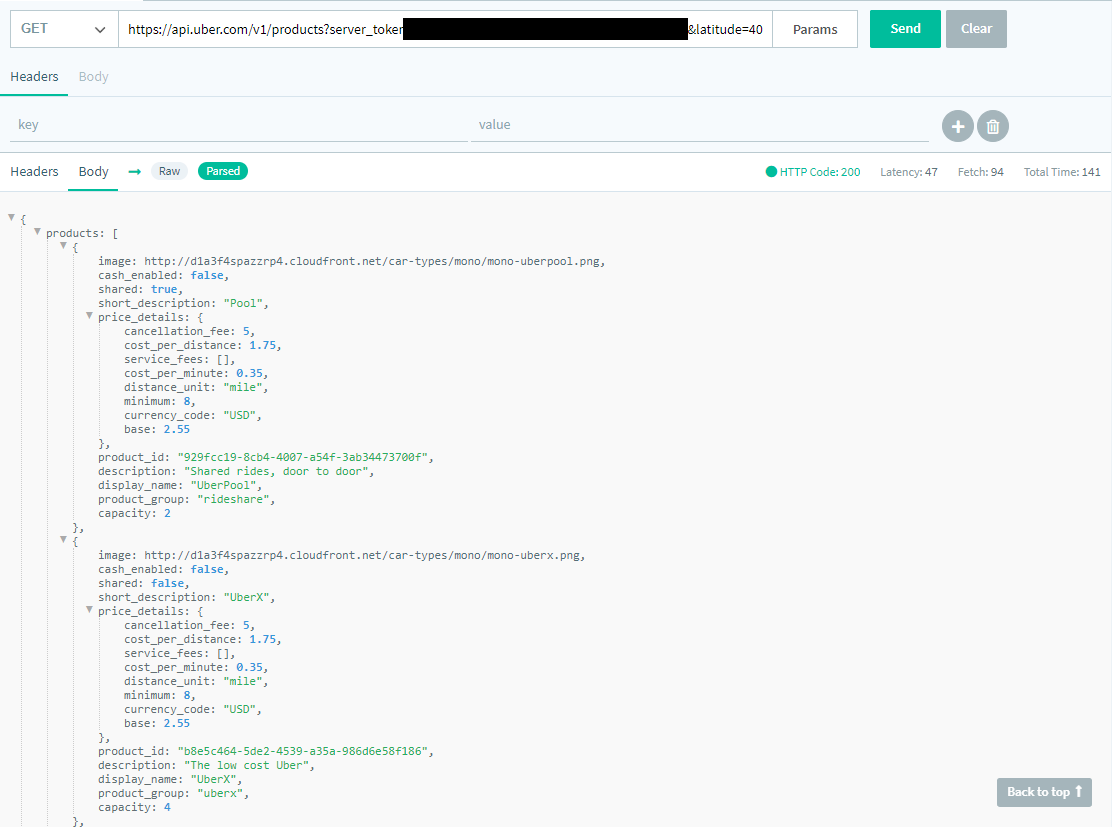Test Every Endpoint
Every endpoint is an integral part of an API program, and that means validating each one works as expected. This even means testing endpoints that add items into a database like Create User. A smart platform allows you to create tests that can add users, validate they were properly entered, and if it’s a success then the user is deleted. [Learn More]
Test Everything
API payloads are filled with information. You should not only be testing every object, but the header also contains vital information. Response-Type, Statuscode, Content-Type, every piece of information in an API call is important to validate.

Test Objects Thoroughly
When testing an API you should make sure all the objects exist, but that is only the first step. You should also be validating the objects have data associated that is within an expected range.
For example, in the below Uber payload you’ll see that
- image should always be a properly formatted URL
- shared should be boolean (true or false)
- display_name should be UberPool, UberX, UberSUV, UberEats, and whatever other products they have available in that city.

Test & Project Organization
Before you begin creating tests for your API program, you should first consider how you want to organize them now and in the future. You may choose to create unique projects for different use cases, or tag the tests thoroughly using a system you create to separate tests that work for version 1 but not version 2. Come up with an organization plan that takes into consideration…
- Expected Audience
- Integration Test vs Simple Endpoint Test
- Versioning
- Legacy vs New APIs
Monitor Your APIs
Again, monitoring is the most useful and yet underused form of testing. You need to know more about an API than if it’s up or down, you need to validate it’s functioning correctly.
Schedule your existing functional and integration tests against the live environment to truly understand how your APIs are working in the real world. Every API program should have a status page. [Learn More]
Automate!
The key to delivering new and updated APIs quickly, and with confidence of their quality, is with test execution automation. This is particularly important for organization using CI/CD platforms like Jenkins, TravisCI, Bamboo, Azure DevOps, and more. Add your test suite to your pipelines as soon as you can. [Learn More]
